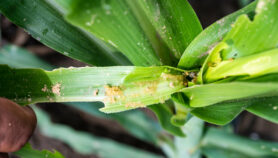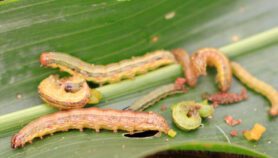By: T.V. Padma
Send to a friend
The details you provide on this page will not be used to send unsolicited email, and will not be sold to a 3rd party. See privacy policy.
[CHENNAI] Eradicating hunger will require more research on nutritious but largely ignored crop species, said specialists in agriculture and biodiversity who met this week (19 April) in Chennai, India.
Participants in the meeting said farmers in developing countries should be encouraged to grow a wider range of native crops to provide local populations with greater dietary diversity.
In Asia, these crops could include varieties of millet; in the Andes region of South America, tubers and grains such as quinoa, canihua and amaranth; and in Africa, green leafy vegetables.
The current focus on just a few crops means there is "a strong chance that the global community will miss the first UN Millennium Development Goal on hunger by several decades beyond 2015," said Olanrewaju Smith, executive secretary of the Global Forum on Agricultural Research.
The United Nations Millennium Development Goals (MDG) are a set of international targets that member nations of the UN have pledged to meet by 2015. The first MDG is to "reduce by half the number of people who suffer from hunger".
Participants in the Chennai meeting said national development plans should make better use of agricultural biodiversity and that there needs to be better access to traditional foods.
The world increasingly relies on a "shrinking food basket" of a few crops to fulfil the dietary needs of its people, said M. S. Swaminathan, chair of the M. S. Swaminathan Research Foundation.
Of the 7,000 plant species that are cultivated worldwide, just 30 provide 90 per cent of human calorie intake. Three — rice, wheat and maize — provide more than half of the planet’s food.
The International Plant Genetic Resources Institute warns that interpreting the first MDG as meaning that each person gets more food, ignores the fact that malnutrition is also about people not getting enough of micronutrients, vitamins and minerals.
Malnutrition contributes to at least half the of the 10.4 million child deaths each year, according to the institute.
Swaminathan said that tackling malnutrition by increasing dietary diversity would not only help address this ‘hidden hunger’ but could also help achieve two more of the Millennium Development Goals, namely reducing infant mortality and reducing the number of women who die in childbirth.
The meeting’s recommendations are being finalised, and will taken into consideration when the UN reviews progress in achieving the MDGs in September.
More than 100 participants from 20 countries attended the meeting. It was organised by the International Plant Genetic Resources Institute and Global Facilitation Unit for Underutilised Species, both based in Rome, Italy, and by the Chennai-based M. S. Swaminathan Research Foundation.
Read more about biodiversity in SciDev.Net’s biodiversity dossier.













